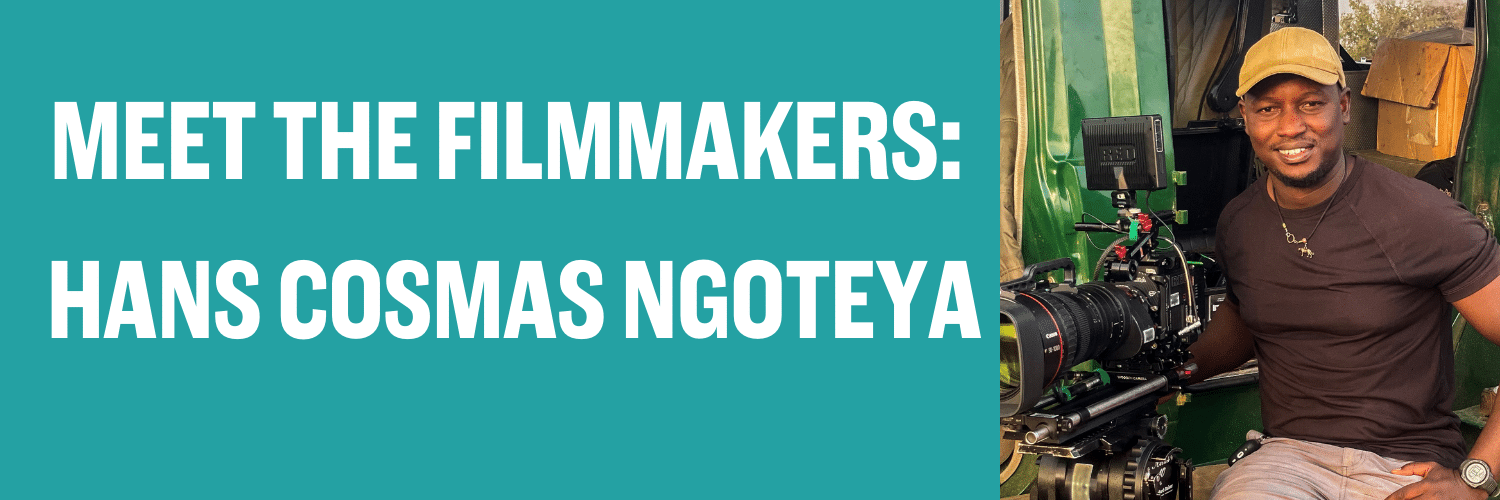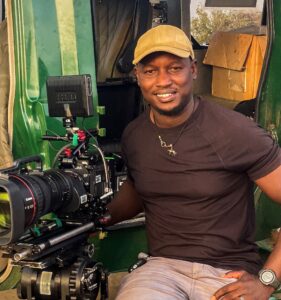WILDSCREEN FESTIVAL TANZANIA FILMMAKER CASE STUDIES: Hans Cosmas Ngoteya
In the latest in a series of Tanzanian filmmaker case studies, we meet Hans Cosmas Ngoteya, co-founder of Ngoteya Wild.

In the latest in a series of Tanzanian filmmaker case studies, we meet Hans Cosmas Ngoteya, co-founder of Ngoteya Wild.
In the latest in a series of Tanzanian filmmaker case studies, we meet Erica Rugabandana, founder of Sima Wild Film.
In the latest in a series of Tanzanian filmmaker case studies, we meet Eliya Lawrence Uzia, co-founder of Tanzania Wildlife Media Association (TaWiMa).


There are very few wildlife filmmakers working in Tanzania today who haven’t connected with Hans Cosmas Ngoteya in some way. From loaning equipment, to mentoring early career professionals, to campaigning for greater access to wildlife areas for local filmmakers, Hans is heavily invested in growing the community.
“In Tanzania the industry is growing. A lot of people want to see change and we’re collaborating, backing each other and working together to move the needle and make that happen.”
Translating wildlife on screen
Hans’ career in wildlife cinematography began in a most unlikely place: music videos. Between filming dance routines and musicians, a passion for conservation was brewing.
“After graduating from collage as wildlife conservationist, I joined an organization in western Tanzania, where I was working as a project manager, as I continued my career as a music video director alongside it.”
“Whilst showing conservation films to people in communities across the region, I found I was constantly having to stop and explain the narratives; they were all in English, and so in translating them for local audiences and relaying the messages, I recognised there was a gap between what was being shown and what people understood”.
Hans was well aware of the power of visuals to engage people with wildlife conservation, but it was a skill set many conservation organisations didn’t have in-house.
“I identified a need for indigenous storytellers and so I founded my own company, Ngoteya Wild, which specialises in science communication in the wildlife sector.
“I see myself as a middleman between the scientists and the general public, translating that research and knowledge into stories that are entertaining and thought-provoking, that inspire change.”
Partnership and opportunities
Hans was appointed as a National Geographic Explorer, receiving a grant to promote human and wildlife co-existence in Tanzania. He was among the first group of grantees selected for National Geographic’s Young Explorer Leadership and Development Program.
“In the past I’ve partnered with a lot of conservation organisations such as WWF to get their messages across (in fact, the collaboration contributed in establishment of a new Man and Biosphere Reserve (RUMAKI) in Tanzania by UNESCO), but I’ve spent the last two years focusing mostly on my own stories, with rhino guardians and more recently with chimp guardians.
“Having the space to do that has been amazing and the power of these sorts of narratives to shift conversations and challenge people’s expectations is immense.”
He’s also been busy with Tanzania Wildlife Media Association (TaWiMA), campaigning for policy change in the country.
“Local wildlife filmmakers face significant barriers when it comes to getting their start in the industry. For example, to access national parks they’re required to pay the same price as international filmmakers, and the cost is too high for many.
“We’re investing in training and mentoring them, building those skills capacities and giving access to kit – but if policies are not put in place to support them to create, then it becomes unsustainable.
“Wildscreen Festival Tanzania has arrived at the right time – when the eyes of the world are on Tanzania, on the talent we’re producing, then perhaps it will grow appetite domestically to support that talent.”
The market for wildlife film
Growing a domestic audience will also be key to the future of wildlife filmmaking in Tanzania, argues Hans. “Most wildlife filmmakers working in Tanzania today are either producing for organisations – non-profits or tour companies – or they’re having to pitch to big international broadcasters to try and find a route to market.
“If you’re selling abroad, however, you’re adapting the narrative to fit those markets, which means it’s unlikely to have the same impact on the communities where its filmed. Local people don’t all have access to big streaming networks, and so those stories are inaccessible to them.
“Without a domestic audience, we don’t have local commissioners funding work. It’s a vicious cycle. So what we need is government, industry and creatives to all come together to make this happen, to open up access, funding and channels of distribution.”
The last three years have seen a growing number of creatives in Tanzania, as better camera equipment has become available and training opportunities have opened up in the country.
“Now what we need, to take us to that next level, is to think strategically about this – we have all the ingredients for success in this field, we just need the support to grow it.”
Wildscreen Festival Tanzania takes place from 6 – 7 June in Arusha, Tanzania. Find out more and buy tickets online here.